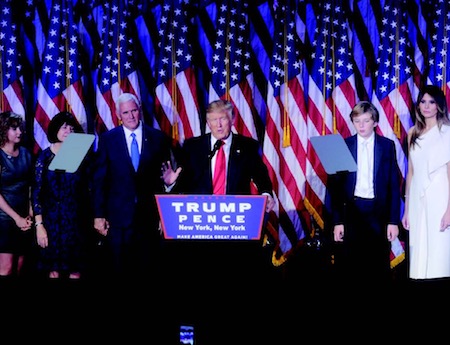November’s Blockbuster Events Reveal the Primal Screen

Related: TV News Didn’t Dress for Success With Big Whiff on Trump
Within the span of a week, America handed us two historic events that revealed everything we need to know about multi-screen behavior. Both had to be seen to be believed, so interest mounted by the second. And the intensity prompted millions to join conversations on second or third devices while staying glued to the TV.
Of course, I’m talking about Game 7 of the World Series, when more than 38 million people tuned in past midnight ET till the nail-biting end to 108 years of sports futility, and Election Night, when state-by-state returns mesmerized 71 million viewers into the wee hours for a stunning outcome.
For sure, social, mobile and live-streaming platforms reported some form of record numbers—we’ll wait for third-party data to verify the claims—in demonstrating their utility as platforms people communicate on. But they played a reaction, not stimulus, role in the story.
The primal screen was TV. The audience tuned to TV for instantaneous pitch-by-pitch and state-by-state developments. They craved the ultimate reality lens and the most authoritative analysis of how and why.
On the night of Game 7, the magnet was experiencing the surreal in its rawest form. When the final out of the 10th inning settled into Anthony Rizzo’s glove at 12:31 a.m. ET, it was almost hard to breathe, let alone process the magnitude of what just happened. All that mattered was that you had seen it at the very moment it happened, on the primal screen.
Related: Analyst: Trump Win Could Delay Ad Spending
On Election Night, the magnets were nuanced electoral maps that changed colors in real time with immediate interpretation. As the gravity of the outcome built from night into morning, viewers overwhelmed social media with reactions to the story happening on TV. A quick example—in direct comparison on average audience per minute, Election Night TV beat the BuzzFeed live stream on Twitter by 71 million to 165,000.
The dynamics matter even more than the numbers. These pivotal events simply amplified what happens every day: People congregate en masse to an array of TV favorites, where they follow common stories that are personal to them. Their visceral attachment to TV stories prompts them to extend the connection through millions of micro conversations across conduits, devices and screens.
Related: Fox Election Coverage Drives Most Social Interactions
This reality forms the fundamental difference between TV and the Ad Tech channels that seek to be considered TV substitutes. TV forms the advertiser’s centerpiece of attention. It’s the primal screen that lights up all the others. Ask any marketer who had an ad running after midnight in the season’s last baseball game.
Sean Cunningham is CEO of the Video Advertising Bureau.
Broadcasting & Cable Newsletter
The smarter way to stay on top of broadcasting and cable industry. Sign up below



